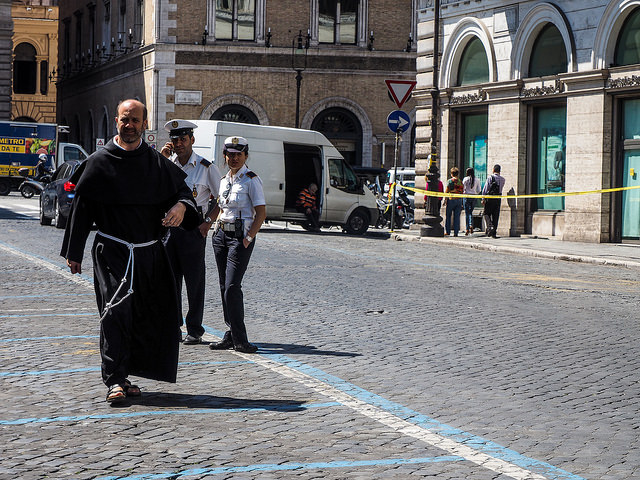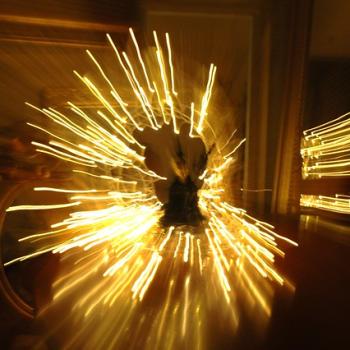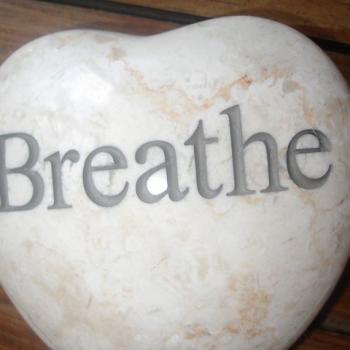
Monastic Life and Working Life
Many of us think of monasteries as places where we can get away from work. A monastery is somewhere we go to find a few days of rest and quiet. Monastic communities are great locations to set aside all the distractions we usually need to juggle.
We can take time to think and reflect at a monastery. It feels like the opposite of everyday working life. Some people retreat to a monastery to sink into the peace and stillness there.
Can the patterns of monastic life feed and strengthen us in our working lives?
Patterns of Monastic Life
The rhythm of daily life in the monastery where I go on retreat follows Benedict’s Rule. Written 1,500 years ago, the Rule guides each aspect of Benedictine monastic life. In general, each day is organized around a series of services for worship and prayer. Each member of the community is responsible for a specific daily work assignment. Time for personal prayer and reflection is included in each day. There are regular mealtimes and the community practices silence overnight.
Monastic life guided by Benedict in his Rule is designed to encourage personal growth. Each community becomes stronger as the individual members grow deeper. Community life is intended to provide a framework for a healthy balance of priorities.
We benefit when we spend adequate time each day resting, working, and reflecting. Monastic life helps people remember to keep things in balance and forget distractions.
The monks at the monastery to whom I am connected compose music, write books, paint pictures. They also wash dishes, make goods to sell, and work in the bookstore. Monks facilitate retreats, provide spiritual direction, give seminars, and provide hospitality. They lead active, productive lives and live in a financially healthy community.
Monks work hard and contribute in significant ways to the world around them. Their lives, though, are about much more than making a living.
They do not measure their effectiveness by the profits the community generates.
Patterns of Working Life
The rhythm of our working lives often feels very different from the life of a monastery. Work days are organized around how much we produce and how much revenue it generates.
It may be a challenge for us to find and sustain a healthy balance in our working lives. Our minds tend to be drawn in the direction of work, even when we are not working. Working life absorbs more and more of our emotional and intellectual capacity.
Work attracts our time and attention. It is difficult to focus on our friends and families, not to mention thought and reflection. We feel like we never really get enough rest.
Our work generates stresses and strains. We feel the pressures of deadlines and expectations. It can be a challenge for us to meet our own standards.
We spend more and more of our time and energy on work and working relationships. It is easy to spend more time with people with whom we work than our own families.
There always seems to be more work to do. Our work never seems to be finished.
We prepare for our work beginning at early ages and spending years in school. Our work is chosen to give us enjoyment and fulfillment, and so we can make a living. Some people agonize over the choice of what work to do while others seem to fall into a job.
Many people spend their working lives headed in one direction only to change their minds. The work they believed inspired them has become routine and disappointing.
A Healthy Balance
Many people think of their work as something they are drawn to do, their calling. They may believe their work has chosen them as much as they have chosen it. Their sense of calling may fire their passion and commitment to how they do their work.
The monks I know are convinced they are called to monastic life. They are committed to a way of life which helps them find balance and wholeness in their lives.
Work is a significant part of their balanced wholeness. When they might tend to lose their balance, their monastic way of life helps them find it.
It is a challenge for us living outside monastic communities to find our own monastic life.
Finding Our Own Monastic Life
One key part of my own discovery of monastic life came as I learned several contemplative practices. A friend who recognized my appreciation of contemplation encouraged me to explore further. She suggested I look into Benedictine spirituality, the source of many of those practices.
As I read, reflected, and visited Benedictine monastic communities, I asked questions and listened to the responses. My exploring, and her continued suggestions, lead me to the community to which I am now connected.
Reading, listening, and reflecting has guided me into my own monastic life. The monks I know have patiently listened to me and guided me. One step at a time my working life has opened into monastic life.
There are many sources of information and inspiration. Books about monastic life and Benedictine spirituality fill shelves in my office. I am happy to make recommendations.
Many monastic communities have websites and other online presences, along with bookstores. They would be happy to show you hospitality and answer your questions.
Books, websites, and other sources of information can be important. I encourage you to learn as much as you can. It is also crucial to listen and reflect.
Finding our own monastic life is not merely an analytical, intellectual process. You will understand when thinking and intuition, feeling and reflection come together.
Monastic life is not only fitting the right key into the right lock at the right time. It takes time, and often someone to listen and help you discern.
Please let me know if I can help.
Questions
When has monastic life shaped your working life this week?
How do you find healthy balance in your working life?
[Image by ajay_suresh]
Greg Richardson is a spiritual life mentor and leadership coach in Southern California. He is a recovering attorney and university professor, and a lay Oblate with New Camaldoli Hermitage near Big Sur, California. Greg’s website is StrategicMonk.com, and his email address is [email protected].












